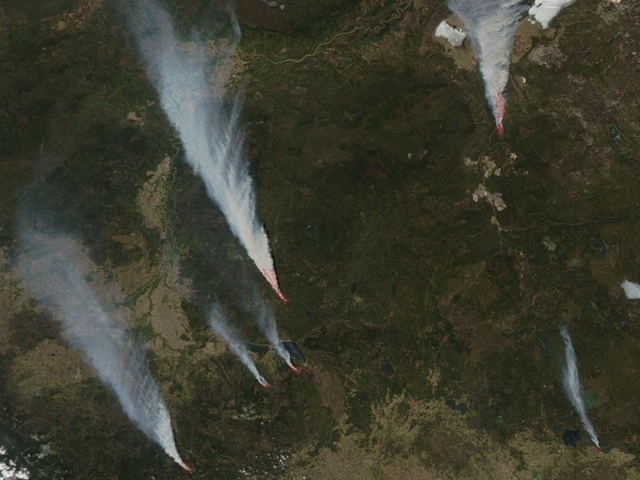More and more, the boreal forest will burn
By Andrew Nikiforuk, TheTyee.ca
20 May 2011 Wildfires ripping through Alberta’s boreal forest or what government officials call “freakish” firestorms are really a snapshot of how warming global temperatures and intensified insect infestations will change the nation’s boreal forest, say scientists. In the last week nearly 100 wildfires, battled by 1,000 forest fighters, have shut in billions of dollars worth of oil and gas facilities and forced the evacuation of 2,000 oil workers from Fort McMurray to Peace River. One raging inferno, driven by 100 kph winds, destroyed a third of the community of Slave Lake north of Edmonton. That smoky region is also chock full of dead trees killed by the mountain pine beetle, another harbinger of changing global weather patterns. Alberta’s wildfires are very “consistent with what we’d expect for climate change,” says Mike Flannigan, a senior fire researcher with Natural Resources Canada. “We are beginning to see fire episodes that are much more severe and much more common and not just in Canada.” Annual temperature changes in northern forests have risen two to three degrees over the last three decades due to warmer winters and springs. The temperature rise in turn has increased the risk of high fire danger from Siberia to Alaska. In 2010 Russia experienced catastrophic wild fires that killed hundreds of people and blackened millions of hectares, while Australia experienced a similar calamity in its drought stressed forests in 2009. Despite expenditures of $800-million a year and some of the world’s best fire fighting crews, the amount of forest area burned in Canada has doubled since the 1970s due to global warming. That now amounts to 2 million hectares a year, an area half the size of Nova Scotia. But the area burned by fires varies from year to year. “Climate change is already impacting our forests,” adds Flannigan. According to his research the annual area destroyed by fire could double again by the end of the century. Some fire forecasts for Alaska, B.C. and the Yukon expect fires to increase five-fold, and all due to warming temperatures. With warming temperatures also come more lightening strikes. “And with more lighting strikes come more fire starts,” explains Flannigan. Rising temperatures also make the forest drier. Given that temperatures are predicted to rise by four to six degrees Celsius, Alberta’s forest will need 40 to 60 more rainfalls to stabilize the fire risk. But with climate change that’s not happening, says Flannigan. …
